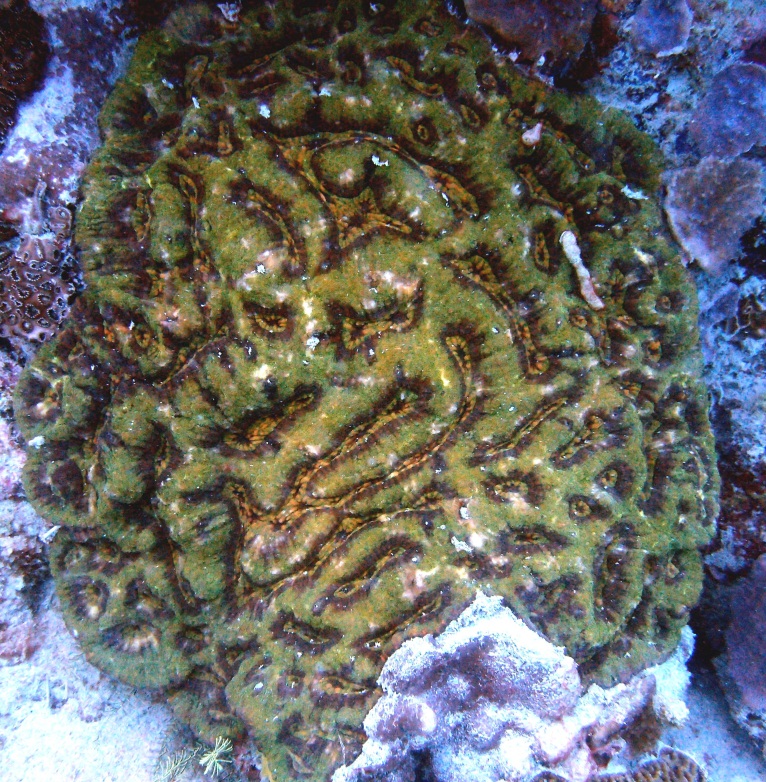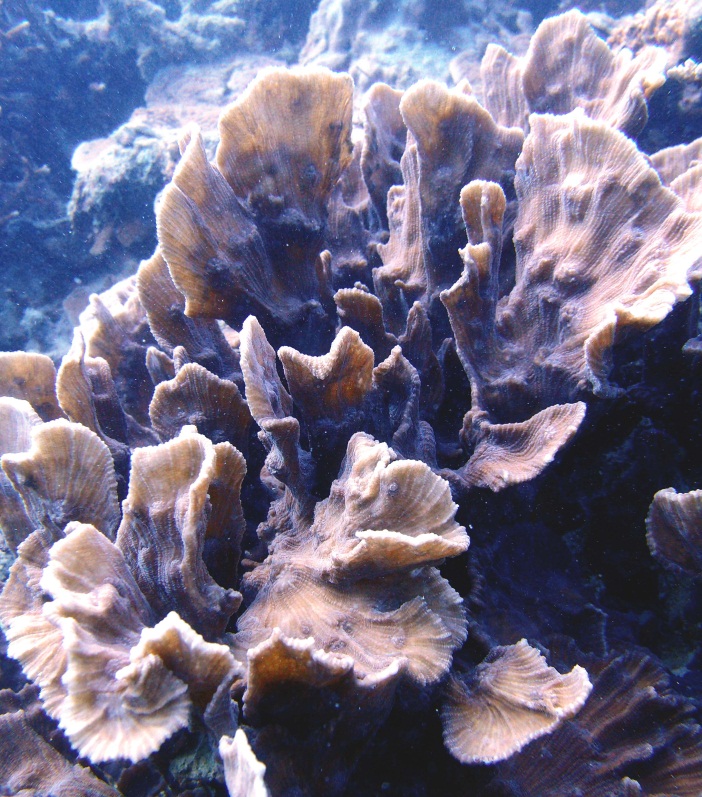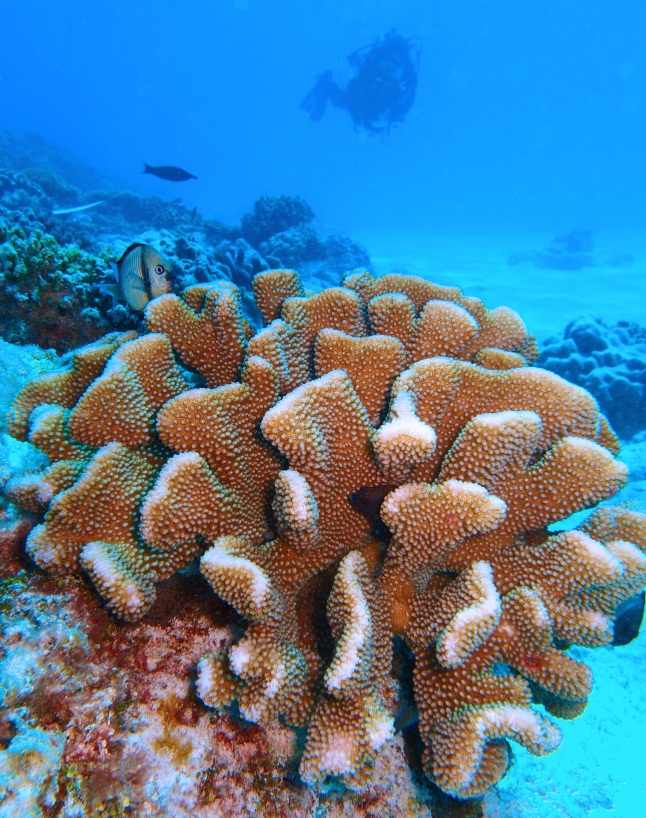Researchers' Diaries
Dr Zoe Richards
Research Scientist (Hard Corals), Western Australian Museum
Our latest trip to the Kimberley targeted a variety of different reef types, including the fringing inshore corals reefs of the Bonaparte Archipelago. We were also fortunate enough to dive Rob Roy Reef, a platform reef on the inner shelf, as well as Browse Island and two mid-shelf shoals, Echuca and Heyward.
While the geological history of all these reefs is very different, they generally all comprise a similar subset of coral species – the majority being typical of the Indo-Pacific. However, in some locations there were surprises. One particularly exciting find during our latest expedition was that of Pectinia maxima from the eastern side of W. Montelivet Island and recorded for the first time in Australia. This species has only been known from SE Asia and this discovery provides further evidence that the Kimberley fauna has SE Asian links.
While the coral species composition appears to be relatively similar between locations, the way these communities are structured is not. For example, the coral Pavona maldivensis is dominant at De Freycincet Island. This is unusual as it has only been found in low numbers throughout the rest of the Kimberley. Similarly, at Rob Roy Reef, Pavona minuta was dominate at 12m depth, again an unusual finding.
We have now surveyed 121 sites in the Kimberley and it is becoming apparent that one species of hard coral, which is in fact not a scleractinian coral, is incredibly important to reef building in the region. It’s name is Heliopora coerule, commonly called, “blue coral”. Heliopora is actually an Octocoral and its skeleton is made of fibro-crystalline aragonite as opposed to calcium carbonate like the scleractinian corals. This species dates back to the Cretaceous Period (145-66 million years ago); hence it crossed the KT boundary when non-avian dinosaurs became extinct. It is well established right across the Kimberley, in both intertidal and subtidal habitats.
Another exciting find during this year’s expedition was two different types or morphs of the coral, Australomussa rowleyensis, the typical brown variety, which has been present subtidally across many of the Kimberley habitats, and a new green and yellow morph, previously only recorded in SE Asia. This latter morph was present at Patricia Island, West Montelivet Island and Rob Roy Reefs and I will keep my eye out for it when we continue our field surveys in October 2013!

- Unusual green and yellow morph of Australomussa rowleyensis.
- Photo by Zoe Richards
- Copyright Western Australian Museum.

- Pectinia maxima recorded in Australia for the first time.
- Photo by Zoe Richards
- Copyright Western Australian Museum.

- Pocillopora eydouxi at Browse Island.
- Photo by Zoe Richards
- Copyright Western Australian Museum.

- Intertidal surveys at Condillac Island.
- Photo by Zoe Richards
- Copyright Western Australian Museum.

